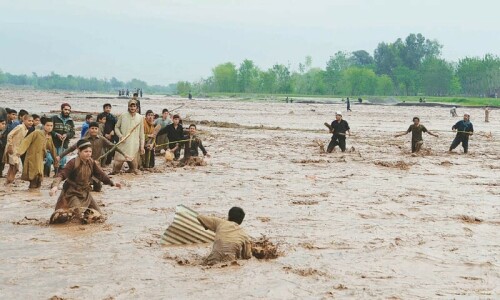PESHAWAR: The federal government has asked the provincial health departments to integrate pharmacists into the healthcare system to ensure the appropriate and rational use of medicines and prevention of complications.
According to a letter issued by the Drug Regulatory Authority of Pakistan to the secretaries of health departments of all provinces, pharmacists should be integrated into the health delivery system for the evaluation of prescriptions according to dose requirement related to age, gender, other medical condition and drug-drug interaction.
Currently, pharmacists have no role in drug prescription in government and private hospitals except the Shaukat Khanum Memorial Cancer Hospital and Research Centre and Aga Khan University Hospital, where the physicians can't give medicines to patients without the intervention and evaluation of clinical pharmacists.
In the letter, the Drap said clinical pharmacists should work directly with physicians, other health professionals and patients to ensure that the medications prescribed to the patients contribute to the best possible health outcomes.
Govt insists move to ensure rational use of medicines, prevention of complications
“Clinical pharmacists are educated and trained in many direct patient care environments, including public and private sector clinics and a variety of other healthcare settings. They assess the status of the patients’ problems and determine whether the prescribed medications are optimally meeting their needs and goals of care,” it said.
The authority added that the clinical pharmacists were trained to evaluate the appropriateness and effectiveness of medications and recognise untreated health problems, which could be improved or resolved with an appropriate medication therapy besides follow-up of patient progress to determine the impact of medications.
It said the pharmacists could consult physicians and other healthcare providers on selecting the therapy, which met the patients’ needs, and contributed effectively to the overall therapy goals.
“Pharmacists can advise patients on how to best take medications and support the healthcare team’s efforts to educate them on other important steps to improve or maintain health.
“They can refer patients to physician or other health professionals to address specific health, wellness, or social services concerns as they arise and can provide care by providing a consistent process of care that ensures the appropriateness, effectiveness, and safety of the medication use,” it said.
The authority insisted that consultation with the patient’s physicians and other healthcare professionals to develop and implement a medication plan could help meet the overall patient care goals set by the healthcare team.
It said clinical pharmacists had specialised knowledge of the scientific and clinical use of medications, including medication action, dosing, and dosage form, duration of treatment, adverse effects and drug interactions and performed patient care activities in collaboration with other members of the healthcare system, so the use of their professional relationships with patients helped meet patient needs.
The health experts told Dawn that medical teaching institutions in the province had less than 60 pharmacists but they largely had no role in patient care.
They said the government hospitals, including district headquarters hospitals, had one pharmacist each and tehsil hospitals none.
The experts said under the World Health Organisation’s guidelines, every 50-bed hospital should have the services of one pharmacist and one clinical pharmacist per 10 beds but overall, the province had no clinical pharmacists.
They said the pharmacists were involved in drug development and dispensation and that they were present in wards along with doctors and paramedics, evaluated prescriptions, monitored drug interactions regarding patients’ conditions, and carried out therapeutic dose management.
Published in Dawn, August 1st, 2021












































